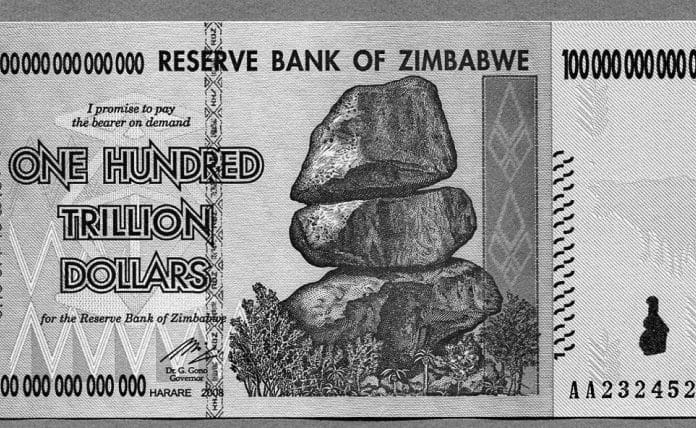Understanding the Tanzanian Shilling to Zimbabwe Dollar Exchange Rate: A Comprehensive Guide
Are you planning a trip to Zimbabwe and wondering about the Tanzanian shilling to Zimbabwe dollar exchange rate? Look no further! In this comprehensive guide, we will break down everything you need to know about understanding and navigating the Tanzanian shilling to Zimbabwe dollar exchange rate.
As travelers, it’s essential to understand the exchange rate to ensure you get the best value for your money. We will explore the factors that influence the exchange rate between the Tanzanian shilling and Zimbabwe dollar, such as regional economic stability, government policies, and market forces.
Whether you’re a currency trader, business owner, or a curious individual, this guide will provide you with valuable insights into how the Tanzanian shilling and Zimbabwe dollar interact in the foreign exchange market. We will also discuss strategies for managing currency fluctuations and offer tips on getting the most favorable exchange rates.
By the end of this article, you’ll have a solid understanding of the Tanzanian shilling to Zimbabwe dollar exchange rate, allowing you to make informed decisions and maximize your financial benefits. So, let’s dive in and unravel the complexities of this intriguing currency exchange!
The Tanzanian Shilling (TZS) and Zimbabwe Dollar (ZWL) – Overview
The Tanzanian shilling (TZS) and the Zimbabwe dollar (ZWL) are the respective currencies of Tanzania and Zimbabwe. Both currencies have their unique histories and characteristics that influence their exchange rates.
The Tanzanian shilling has been the official currency of Tanzania since 1966. It is issued and regulated by the Bank of Tanzania. The currency is denominated in banknotes, with denominations ranging from 500 shillings to 10,000 shillings. The Tanzanian shilling is widely accepted within the country and is used for everyday transactions.
On the other hand, the Zimbabwe dollar has a more complex history. The original Zimbabwe dollar (ZWD) was the official currency of Zimbabwe until it was abandoned in 2009 due to hyperinflation. During this period, Zimbabwe adopted a multi-currency system, where the United States dollar, South African rand, and other foreign currencies were used for transactions.
In 2019, Zimbabwe reintroduced its own currency, the Zimbabwe dollar (ZWL), as the sole legal tender. The new currency was introduced in a bid to regain control over monetary policy and stabilize the economy. Banknotes of various denominations, including $2, $5, $10, and $20, were issued.
Understanding the background and characteristics of the Tanzanian shilling and Zimbabwe dollar is crucial for comprehending their exchange rate dynamics. Let’s explore the factors that influence the exchange rate between these two currencies.
Factors affecting the exchange rate between TZS and ZWL

The exchange rate between the Tanzanian shilling and Zimbabwe dollar is influenced by a variety of factors. These factors can be broadly categorized into economic, political, and market-related factors. Understanding these factors will give us insights into the fluctuations and trends in the exchange rate.
One of the primary economic factors that affect the exchange rate is the relative economic stability of the two countries. Economic stability is determined by factors such as inflation rates, interest rates, and fiscal policies. When one country experiences higher inflation or interest rates compared to the other, its currency tends to depreciate against the other currency. Therefore, if Zimbabwe experiences high inflation, the Zimbabwe dollar may weaken against the Tanzanian shilling.
Political stability is another crucial factor that impacts the exchange rate. Political unrest, government instability, and policy uncertainty can lead to a devaluation of the currency. Investors and traders tend to favor stable political environments, as they provide a sense of security for their investments. Therefore, any political instability in either Tanzania or Zimbabwe can lead to fluctuations in the exchange rate.
Market forces also play a significant role in determining the exchange rate between the Tanzanian shilling and Zimbabwe dollar. Supply and demand dynamics in the foreign exchange market can cause the exchange rate to fluctuate. For instance, if there is a high demand for Tanzanian shillings in Zimbabwe due to increased trade or tourism, the exchange rate may favor the Tanzanian shilling.
Understanding the interplay between these economic, political, and market-related factors is essential for predicting and analyzing the exchange rate between the Tanzanian shilling and Zimbabwe dollar. However, it’s important to note that exchange rates are highly volatile and can be influenced by various unpredictable events. Historical trends can provide some insights into the exchange rate movements.
Historical trends in the TZS to ZWL exchange rate
Analyzing historical trends in the Zimbabwe dollar to Tanzanian shilling exchange rate can provide valuable insights into the currency’s performance over time. While past performance does not guarantee future results, it can help identify patterns and potential factors that drive exchange rate movements.
Historically, the Tanzanian shilling and Zimbabwe dollar have experienced fluctuations and significant depreciation. Zimbabwe, in particular, has faced severe economic challenges, including hyperinflation, which led to the abandonment of the original Zimbabwe dollar in 2009. During this period, the Tanzanian shilling was often used as a more stable currency for transactions within Zimbabwe.
After the reintroduction of the Zimbabwe dollar as the sole legal tender, the exchange rate between the Tanzanian shilling and Zimbabwe dollar stabilized to some extent. However, fluctuations are still observed due to economic and market factors. It’s important to monitor the exchange rate and stay updated on any significant developments that may impact the exchange rate between these two currencies.
Now that we understand the historical trends, let’s delve into the mechanics of calculating the exchange rate between the Tanzanian shilling and Zimbabwe dollar.
How to calculate the exchange rate between TZS and ZWL
Calculating the exchange rate between the Tanzanian shilling and Zimbabwe dollar is relatively straightforward once you have the necessary information. The exchange rate is determined by the relative values of the two currencies in the foreign exchange market.
To calculate the exchange rate, you need to know the amount of Tanzanian shillings you want to convert into Zimbabwe dollars or vice versa. Once you have the amount, you can divide it by the current exchange rate to obtain the equivalent value in the other currency.
For example, if the exchange rate is 1 Tanzanian shilling to 0.05 Zimbabwe dollars, and you want to convert 10,000 Tanzanian shillings to Zimbabwe dollars, you would divide 10,000 by 0.05 to get 200,000 Zimbabwe dollars.
It’s important to note that exchange rates can vary between different banks, money changers, and online platforms. Therefore, it’s advisable to compare rates from multiple sources to ensure you get the best possible exchange rate.
Understanding how to calculate the exchange rate allows you to plan and budget for your expenses when traveling to Zimbabwe or engaging in international trade. However, it’s crucial to be aware of the impact of exchange rate fluctuations on businesses and individuals.
Understanding the impact of exchange rate fluctuations on businesses and individuals
Exchange rate fluctuations can have significant implications for businesses and individuals engaged in international trade or travel. Understanding these implications is crucial for managing currency risk and maximizing financial benefits.
For businesses involved in international trade, exchange rate fluctuations can impact the cost of imported goods and exported products. A depreciation in the Tanzanian shilling against the Zimbabwe dollar can make imported goods more expensive, leading to higher costs for businesses and potentially reducing their competitiveness. On the other hand, a depreciation in the Zimbabwe dollar can make exported goods more affordable for foreign buyers, potentially boosting sales.
For individuals, exchange rate fluctuations can impact the purchasing power of their currency when traveling abroad. A weaker Tanzanian shilling against the Zimbabwe dollar means that individuals need to spend more Tanzanian shillings to obtain the same amount of Zimbabwe dollars. This can affect the affordability of goods and services, as well as travel expenses.
Managing exchange rate risk is crucial for businesses and individuals looking to mitigate the impact of currency fluctuations. There are several strategies that can be employed to manage this risk, such as hedging, diversifying currencies, and negotiating favorable exchange rates with banks or money changers.
Tips for managing exchange rate risk when dealing with TZS and ZWL
Managing exchange rate risk requires careful planning and consideration. Here are some tips to help you effectively manage exchange rate risk when converting your Tanzanian shilling to Zimbabwe dollar:
- Monitor exchange rates: Stay updated on the latest exchange rates between the Tanzanian shilling and Zimbabwe dollar. This will help you identify favorable rates and plan your currency conversions accordingly.
- Hedge your currency: Consider using hedging instruments such as forward contracts or options to protect yourself against adverse exchange rate movements. These financial instruments allow you to lock in a specific exchange rate for future transactions, reducing the risk of currency fluctuations.
- Diversify currencies: If possible, diversify your currency holdings to include multiple currencies. This can help spread the risk and minimize the impact of fluctuations in a single currency.
- Negotiate favorable rates: When converting large amounts of currency, consider negotiating with banks or money changers for more favorable exchange rates. Building relationships with trusted forex providers can help you secure better rates over time.
- Plan ahead: If you know you’ll be traveling to Zimbabwe or engaging in financial transactions involving the Tanzanian shilling and Zimbabwe dollar, plan ahead and budget for potential exchange rate fluctuations. This will ensure you’re prepared for any unexpected changes in the exchange rate.
Implementing these tips can help you effectively manage exchange rate risk and optimize your financial outcomes when dealing with the Tanzanian shilling and Zimbabwe dollar. To do so, it’s essential to have access to accurate and up-to-date exchange rate information.
Where to find the latest TZS to ZWL exchange rate
Finding the latest Tanzanian shilling to Zimbabwe dollar exchange rate is crucial for making informed decisions and executing currency conversions. There are several reliable sources where you can find accurate and up-to-date exchange rate information.
- Central banks: The central banks of Tanzania and Zimbabwe provide official exchange rates on their websites. These rates are often used as reference rates by banks and other financial institutions.
- Commercial banks: Most commercial banks provide exchange rate information on their websites or at their branches. It’s advisable to compare rates from multiple banks to ensure you get the best possible rate.

NBC Commercial banks - Online currency converters: Several online platforms offer real-time currency conversion and exchange rate information. These platforms allow you to input the amount you want to convert and provide you with the equivalent value in the other currency.
- Forex providers and money changers: Forex providers and money changers can provide you with the latest exchange rates and assist you with currency conversions. It’s important to choose reputable providers with competitive rates.
By accessing reliable sources of exchange rate information, you can stay updated on the latest Zimbabwe dollar to Tanzanian shilling exchange rate and make informed decisions regarding your currency transactions.
Exchange rate policies and regulations in Tanzania and Zimbabwe
Exchange rate policies and regulations play a crucial role in determining the exchange rate between the Tanzanian shilling and Zimbabwe dollar. Both Tanzania and Zimbabwe have implemented various measures to manage their respective currencies and stabilize their economies.
In Tanzania, the exchange rate of the Tanzanian shilling is determined by market forces, with the Bank of Tanzania intervening in exceptional cases to maintain stability. The central bank monitors economic indicators and adjusts monetary policies to influence the exchange rate indirectly.
In Zimbabwe, the Reserve Bank of Zimbabwe (RBZ) plays a more active role in managing the exchange rate. The RBZ sets the official exchange rate, which is used for official transactions and some specific sectors. However, a parallel market for foreign exchange exists, where the exchange rate is determined by market forces and is often higher than the official rate.
It’s important to understand and comply with the exchange rate policies and regulations when engaging in currency transactions in Tanzania and Zimbabwe. Familiarizing yourself with the rules and procedures will ensure that you operate within the legal framework and avoid any potential penalties or risks.
Key takeaways
Understanding the Tanzanian shilling to Zimbabwe dollar exchange rate is essential for travelers, currency traders, and businesses operating in the region. By considering the economic, political, and market-related factors that influence the exchange rate, individuals can make informed decisions and manage their currency risk effectively.
Analyzing historical trends, calculating exchange rates, and monitoring current rates are crucial for understanding the exchange rate dynamics. Implementing strategies to manage exchange rate risk, such as hedging and diversifying currencies, can help mitigate the impact of fluctuations.
Accessing reliable sources of exchange rate information, such as central banks, commercial banks, and online platforms, ensures that you have the latest information to make accurate currency conversions.
In conclusion, understanding the Zimbabwe dollar to Tanzanian shilling exchange rate empowers individuals and businesses to navigate the foreign exchange market with confidence and maximize their financial benefits. So, whether you’re planning a trip to Zimbabwe or engaging in international trade, make sure to stay informed and make the most of your currency transactions.
For more articles related to Financial Services in Tanzania, click here!































